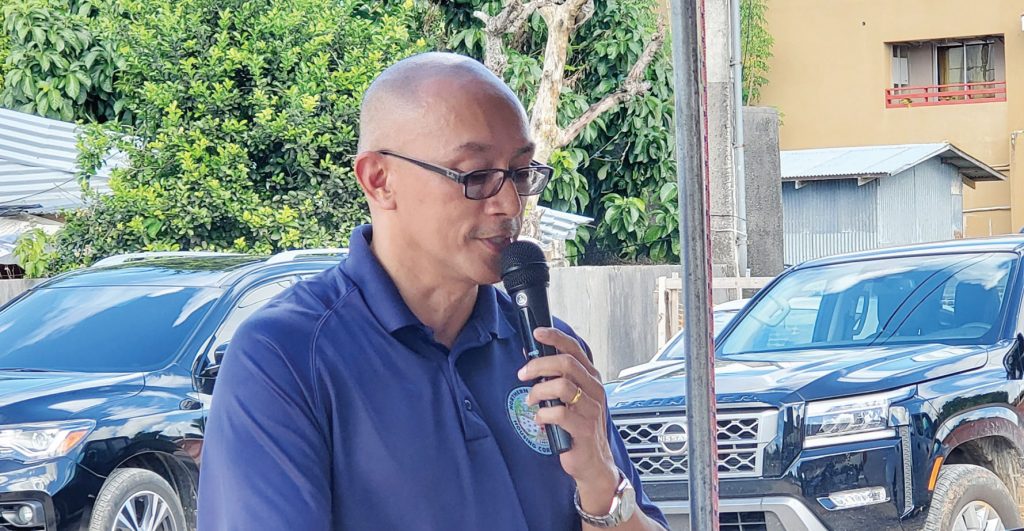OF $254.3M AVAILABLE CDBG-DR FUNDS
‘Wish list’ of projects worth $680M submitted
From an initial $243.9 million allocation under the Community Development Block Grant-Disaster Recovery Program, to the allocation of a supplemental grant that boosted the final award to $254.3 million, the final amount was still unable to meet what was basically a “wish list” of projects government agencies applied for back in January 2019, according to the Northern Marianas Housing Corp.
NMHC Corporate director Jesse S. Palacios said the combined amounts of projects that CNMI government agencies applied for totaled $680 million.
He said the CNMI’s CDBG-DR allocation was initially awarded $243,946,000 on Nov. 24, 2020, but this has since evolved and increased to the current $254,324,000 as a result of additional supplemental funding in the amount of $10,378,000 awarded by U.S. Department of Housing and Urban Development in June 2019 to fund the CNMI’s unmet needs.
Palacios discussed the CDBG-DR funds in NMHC’s summary report submitted last Feb. 8 to Sen. Paul A. Manglona (Ind-Rota), who chairs the Senate Public Utilities, Transportation and Communications Committee, and Rep. Vicente S. Aldan (Ind-Saipan), who chairs the House of Representatives PUTC Committee. Manglona and Aldan held a joint PUTC hearing last Feb. 9 intended to obtain an update on the status of projects under the CDBG-DR grant agreement.
In his appearance before both committees, Palacios said that U.S. Public Laws 115-254 and 116-20 appropriated the sum of $243,946,000 in CDBG-DR funds to the CNMI for the purpose of addressing disaster recovery unmet needs following the onslaught of Typhoon Mangkhut on Sept. 10, 2018 and Super Typhoon Yutu on Oct. 24, 2018.
HUD approved NMHC’s CDBG-DR action plan on Oct. 4, 2020, and subsequently inked the grant agreement on Nov. 24, 2020, officially awarding the sum of $243.95 million in CDBG-DR funds to the CNMI.
Palacios said that no less than $195,157,000 of the total $243.9 million must be spent for recovery in the HUD-identified “most impacted and distressed,” or MID, areas. HUD identified Saipan and Tinian as MID areas.
Palacios said the CNMI, through NMHC, has six years from the date of execution of the grant agreement to spend these funds.
Upon execution of the CDBG-DR grant agreement, the CNMI was awarded the sum of $243.9 million and allocated to fund eligible activities—housing (46%), infrastructure (43%), economic revitalization (4%), planning (2%), and administration (5%).
With the supplemental $10.3-million funding awarded by HUD, Palacios said the NMHC board of directors approved the management’s recommendation to increase the CDBG-DR housing program’s allocation by $9,859,100 and administration by $518,900.
In response to Sen. Celina R. Babauta’s (D-Saipan) questions during the Feb. 9 joint PUTC hearing, NMHC deputy corporate director Zenie P. Mafnas disclosed that all government agencies applied for CDBG-DR funding in January 2019.
Mafnas said the submissions were not so much only for damaged facilities, but basically a wish list as well.
“I don’t remember the actual counts, but as far as dollar value, about $680 million worth of projects were submitted,” she said.
Mafnas said as not all projects were CDBG-DR-eligible, so they had to vet the whole list. She said when they finally got the allocation amount of $243 million, that’s when they went back again and asked these agencies to narrow down their list. She said the list was based on the top priority submissions of these agencies.
“It became a wish list to top 15, to top 10, to top 5, to top 3. What are your priorities. Because we cannot tell an agency—we cannot tell CUC what’s their priority. We cannot tell Tinian what their priorities are,” Mafnas said.
NMHC CDBG-DR program manager Kimo Rosario said they don’t tell the agencies apply, but they encouraged them to apply because they need to spend the money within the six-year period.
“They submit their applications, we reviewed them and we determined whether the activities are eligible or ineligible. But as far as prioritization, it is the onus of the applying agency,” Rosario said.
He said they don’t judge the application as they just reviewed them to ensure that they meet stringent grant requirements, and notified them.
























